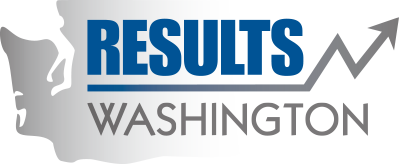Archived: Diverse, Equitable, and Inclusive Workforce
Customer Satisfaction and Employee Engagement
Increase the percentage of persons with disabilities and people of color in leadership positions from 18.6% to 21.4% by July 2020
These goals look at the extent to which leadership positions reflect our population. Because diversity, equity and inclusion concern more than just protected categories, we also included an indicator, from our state’s Employee Engagement Survey, that asks employees whether they feel like they are treated fairly, an important component of an inclusive work environment. These measures were developed with input from key stakeholders over the past year, including the Diversity Council, Veterans Employee Resource Group, HR managers, deputies and conversations with Goal Council 5.
Executive Order 13-02 specifies, "Washington State is committed to developing and maintaining a high performing public workforce that provides access, meaningful services, and improved outcomes for all citizens. In order to achieve these aims, state leaders must be able to apply diverse perspectives and experiences to the examination of the issues facing the state. Such diversity enhances the fullness of our understanding of these issues and opens opportunities for the consideration of new and better solutions."
According to The Center for American Progress, a diverse workforce is integral to a strong economy. Among its top 10 economic facts about diversity in the workplace is that a diverse workplace can capture a greater share of the consumer market. Recruiting from a diverse pool of candidates leads to a more qualified workforce.
What are diversity, equity and inclusion?
- Diversity: Diversity reflects and embraces acceptance and respect. It encompasses race, gender, ethnic group, age, personality, cognitive style, tenure, organizational function, education, background and more.
- Workplace Equity: Describes an environment of full representation and inclusion in the workplace, combined with a call for removing structural and institutional barriers that impede this vision.
- Inclusion: Inclusion is a state of being valued, respected and supported. It is about focusing on the needs of every individual and ensuring the right conditions are in place for each person to achieve his or her full potential.
Individuals with disabilities currently compose 3.2 percent of all leadership positions in the executive branch workforce. A breakdown of leadership positions above shows 3.6 percent of Exempt Management Service (EMS), 3.5 percent of Washington Management Service (WMS) and 1.2 percent of exempt positions are held by persons with disabilities. Additionally, the HR Management Report for fiscal year 2016 found 3.4 percent of the executive branch workforce identified as persons with disabilities.
- The development and implementation of statewide diversity,equity and inclusion training to include all hiring managers and agencyleadership, focusing on best practices for recruiting and retaining a diversestaff.
- The development of an Immigrant Business Resource Group – WashingtonImmigrant Network.
- The development of an Individuals with Disabilities Business Resource Group.
- Continued promotion and support of ethnic commissions, businessresource groups and employee resource groups.
The Diversity, Equity and Inclusion Council (formally known as the Diversity Council) serves as the state’s diversity advisory and coordinating group. The council works collaboratively with OFM State Human Resources, DES Workforce Support and Development and agency HR offices to provide recommendations on strategic staffing efforts across state government. The Talent Management Council (formally known as the Staffing Council) serves as the state’s recruitment advisory and coordinating group. The council works collaboratively with OFM State Human Resources, DES Workforce Support and Development and agency HR offices to provide recommendations on strategic staffing efforts across state government. OFM's workforce and data trends website.
Reported by: State Human Resources, Office of Financial Management
